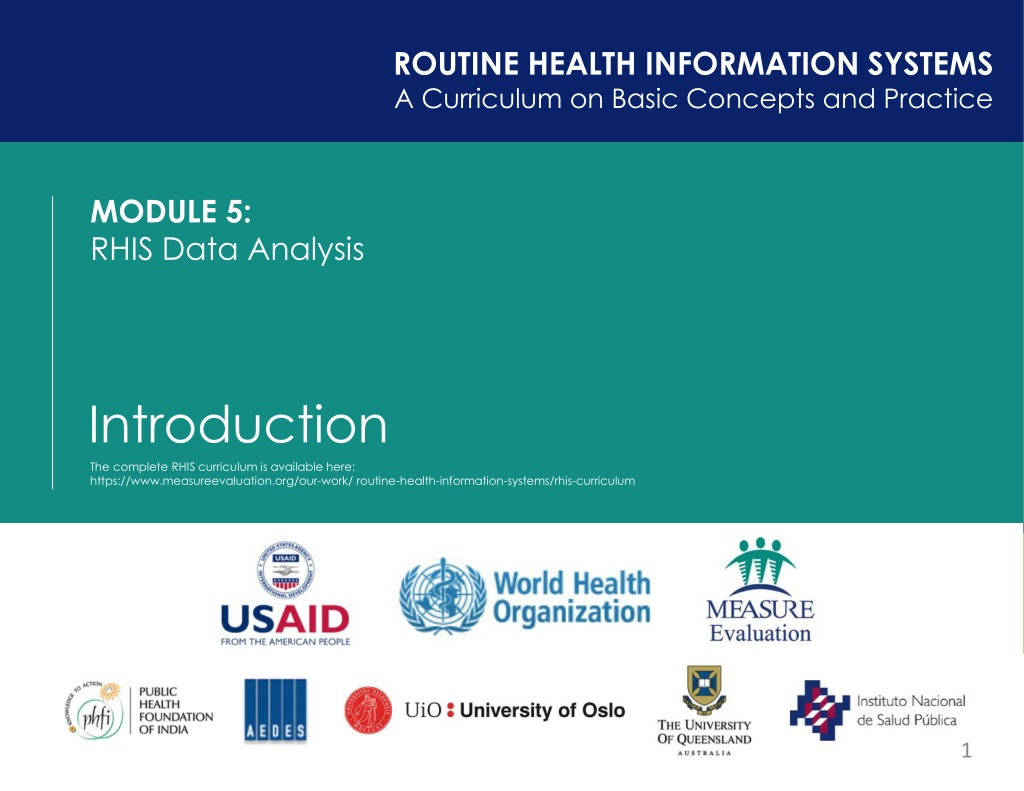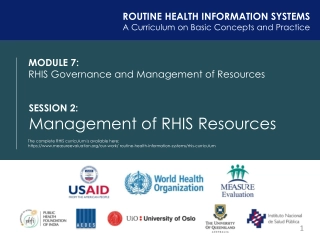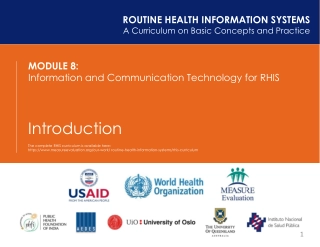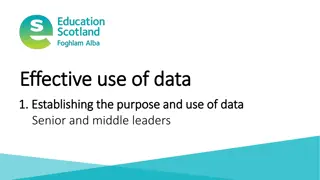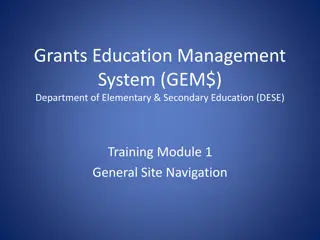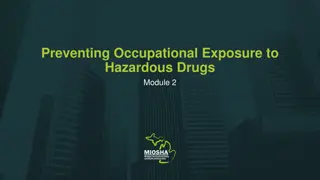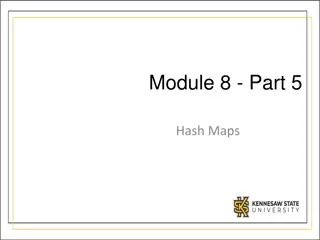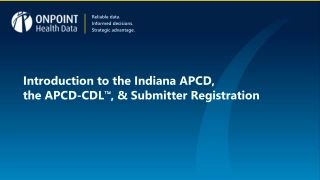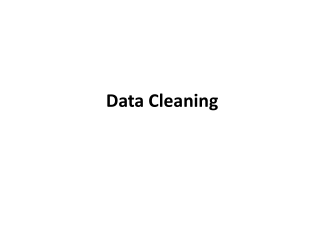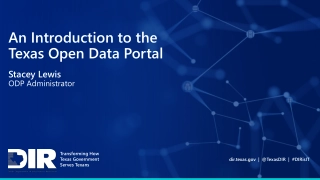RHIS Module 5: Data Analysis Essentials
Delve into the fundamental concepts of data analysis in Routine Health Information Systems (RHIS) Module 5. Learn to select indicators, analyze data, and communicate key findings effectively. Explore key references for further insights on health facility data, data quality, and effective data presentation.
Download Presentation
Please find below an Image/Link to download the presentation.
The content on the website is provided AS IS for your information and personal use only. It may not be sold, licensed, or shared on other websites without obtaining consent from the author. Download presentation by click this link. If you encounter any issues during the download, it is possible that the publisher has removed the file from their server.
Presentation Transcript
ROUTINE HEALTH INFORMATION SYSTEMS A Curriculum on Basic Concepts and Practice MODULE 5: RHIS Data Analysis Introduction The complete RHIS curriculum is available here: https://www.measureevaluation.org/our-work/ routine-health-information-systems/rhis-curriculum 1
Module 5: Learning Objectives By the end of this module, participants will be able to: Define the basic concepts and terminology of data analysis Select appropriate charts Select appropriate indicators to be measured with routine data: the indicators that will be the focus of analysis Understand the link between data analysis and data quality and also the need to adjust the data, if necessary, prior to analysis Select appropriate denominators for the calculation of indicators Compare findings from routine data with findings from other data sources Analyze routine data to produce information products: tables, graphs, and maps Communicate key findings of data analysis 2
Module 5: Structure Duration: 9 hours Number of sessions: 3 Session 1: Key Concepts of Data Analysis (65 minutes) Session 2:Overview of Steps 1 4 of Data Analysis (3 hours, 25 minutes) Session 3: Step 5 of Data Analysis (4 hours, 30 minutes) 3
Module 5: Suggested References World Health Organization (WHO) & United States Agency for International Development. (2014). Analysis of health facility data: Methodological issues and solutions. Guidance for managers and analysts of health facility data. Geneva, Switzerland: WHO. World Health Organization. Global reference list of 100 core health indicators. Retrieved from http://www.who.int/healthinfo/indicators/2015/en/ World Health Organization (WHO). (2015). Data quality review (DQR): a toolkit for facility data quality assessment, version 1.0. Geneva, Switzerland: WHO. Abela, A. (2009). Chart suggestions: A thought starter. Retrieved from http://extremepresentation.typepad.com/blog/2006/09/choosing_ a_good.html. 4
Module 5: Suggested References (cont.) Evergreen, S. (2014). Presenting data effectively: Communicating your findings for maximum impact. Thousand Oaks, CA: Sage Publications. DHIS 2 Documentation Team. DHIS 2 user manual. (2016), retrieved from https://www.dhis2.org/doc/snapshot/en/user/html/dhis2_user_man ual_en.html. Excelcentral.com. (2016). Online tutorial on using Excel to create charts. Retrieved from http://excelcentral.com/excel2007/essential/lessons/05010- create-a-simple-chart-with-two-clicks.html. MEASURE Evaluation. (2009). Making research findings actionable: A quick reference to communicating health information for decision-makers. Retrieved from http://www.cpc.unc.edu/measure/resources/publications/ms-09- 39. 5
ROUTINE HEALTH INFORMATION SYSTEMS A Curriculum on Basic Concepts and Practice This presentation was produced with the support of the United States Agency for International Development (USAID) under the terms of MEASURE Evaluation cooperative agreement AID-OAA-L-14-00004. MEASURE Evaluation is implemented by the Carolina Population Center, University of North Carolina at Chapel Hill in partnership with ICF International; John Snow, Inc.; Management Sciences for Health; Palladium; and Tulane University. The views expressed in this presentation do not necessarily reflect the views of USAID or the United States government. 6
